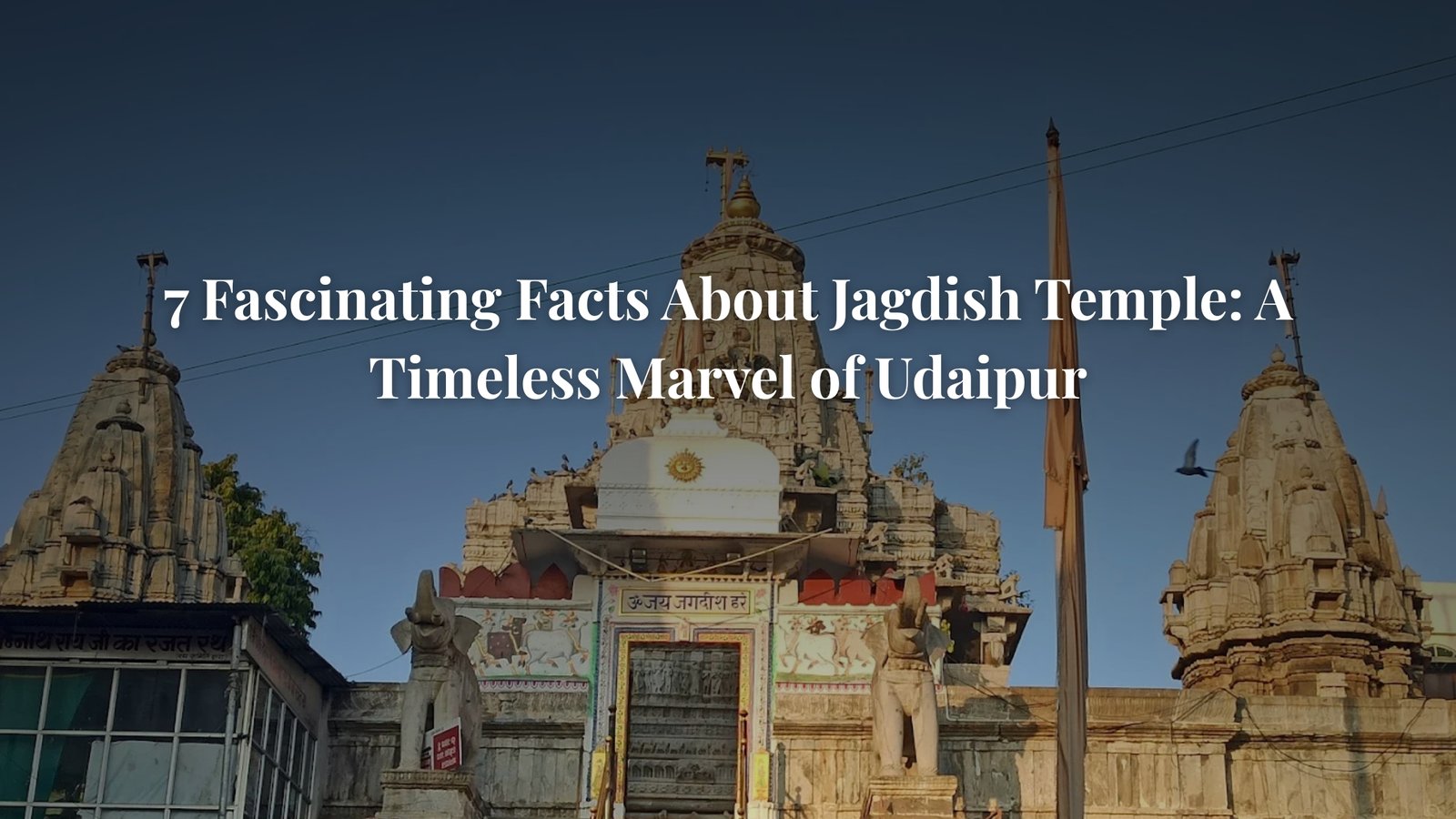Introduction
Jagdish Temple in Udaipur is one of the grandest and most spiritually significant landmarks in Rajasthan. Enshrined in the heart of the city near the majestic City Palace, this 17th-century temple embodies the architectural brilliance and profound devotion of the Mewar dynasty. Built in 1651 by Maharana Jagat Singh I, Jagdish Temple is dedicated to Lord Vishnu, who is revered as the preserver of the universe.
For travelers aiming to explore Udaipur’s heritage or devotees seeking spiritual solace, exploring Jagdish Temple is a journey into artistry, mythology, and centuries of cultural traditions. Beyond its religious importance, this temple’s legends, carvings, and festivals continue to make it one of the most unforgettable experiences in Udaipur.
1. The Grand Entrance of Jagdish Temple
The grandeur of Jagdish Temple begins at its very threshold. A flight of 32 carved marble steps leads visitors upward toward the entrance. Flanking the gate are mighty stone elephants, guardians of the sacred sanctum. Intricately carved panels adorn the staircase, reflecting Udaipur’s legacy of devotion and artistry blended seamlessly. Many locals believe climbing these steps itself is a ritual of spiritual cleansing, preparing devotees for darshan.
2. Architecture Reflecting Eternal Grandeur
Exploring Jagdish Temple gives visitors a firsthand experience of Indo-Aryan architectural excellence. Rising almost 79 feet, the shikhara (spire) towers majestically over central Udaipur. The temple is built on a raised plinth, surrounded by smaller shrines dedicated to Lord Shiva, Ganesh, the Sun God, and Goddess Shakti.
The temple’s structure is supported by exquisitely carved pillars, each decorated with motifs of celestial beings, apsaras, and dancers. The domes, halls, and mandapas illustrate how Mewar artisans employed architecture not only for worship but also as an expression of divine stories in stone. Every carving makes Jagdish Temple an open museum of devotion immortalized in marble.
3. The Sacred Idol of Lord Vishnu
Inside the sanctum sanctorum of the Temple lies its spiritual heart—the grand idol of Lord Vishnu in Garuda form. Made from black stone, this idol stands about 5 feet tall, exuding a feeling of eternal strength and protective presence. The idol depicts Vishnu seated majestically, radiating serenity and divine power. Pilgrims from across India visit Jagdish Temple to seek blessings, believing that Vishnu’s presence here is everlasting and protective for the city of Udaipur.
Surrounding the central idol are smaller shrines enshrining deities that celebrate the balance of cosmic energies, making the Temple a hub of Hindu faith where devotion and unity converge.
4. Legends That Define Jagdish Temple
The legends connected with the Temple truly add to its aura. The most popular story states that Maharana Jagat Singh I, after a divine vision of Lord Vishnu, commissioned this temple as a form of devotion and gratitude. Locals also believe the temple safeguards Udaipur, acting as a divine shield from misfortune.
Another legend tells of how the idol itself was consecrated with sacred rituals believed to have the power to infuse eternal energy into the temple. This spiritual magnetism explains why the Temple continues to attract pilgrims and travelers after more than three centuries.
5. Festivals and Rituals at Jagdish Temple
Exploring the Temple during a festival is an experience like no other. On occasions like Diwali, Janmashtami, Holi, and Ram Navami, the temple radiates a new level of energy. The idol is adorned with colorful garments and jewelry, while bhajans and devotional songs fill the air.
Daily rituals at the Temple are equally profound. The morning aarti welcomes the day with bells, conch shells, and chanting, while evening prayers end with glowing diyas illuminating the entire courtyard. For devotees, these daily and seasonal rites embody a sense of community and devotion that goes beyond religious boundaries.
6. The Artistic Carvings of Jagdish Temple
The detailing in Jagdish Temple’s carvings transforms stone into storytelling. The outer walls depict runs of elephants, horses, celestial musicians, and mythological narratives that have been preserved over centuries. Travelers exploring Jagdish Temple often describe it as walking through an artistic timeline where episodes of devotion, dance, and cosmic legends are engraved in marble.
Scholars of art and history frequently study these carvings to understand the cultural identity of the Mewar region, as the temple stands at the confluence of both religious and artistic heritage.
7. Jagdish Temple: A Living Cultural Landmark
Beyond the divine aura, the Temple plays a vital role in Udaipur’s cultural map. It is not merely a relic of the past but part of the city’s daily rhythm. Surrounding streets bloom with local life—vendors selling flowers for offerings, traditional musicians playing devotional tunes, and families gathering for morning and evening darshan.
Tourists find themselves blending with locals, observing how the Temple remains central to Udaipur’s spiritual and social heartbeat. Exploring Jagdish Temple is, therefore, not just about monuments—it’s about experiencing Udaipur’s living traditions firsthand.
Practical Travel Tips for Exploring Jagdish Temple
- Best Time to Visit: Early morning or evening aarti provides the most captivating spiritual experience.
- Location: Situated in the center of Udaipur, just 150 meters from the City Palace.
- Timings: Open daily from 4:15 AM to 1:00 PM and 5:15 PM to 8:00 PM.
- Entry Fee: Free for all devotees and tourists, making it easily accessible.
- Photography Tip: Capture the grandeur of the shikhara against the sunset sky for a frame-worthy memory.
Conclusion
Exploring the Temple is more than just a sightseeing activity—it is an immersion into Udaipur’s timeless spirituality, artistry, and legends. From the protective myths and intricately carved spire to the sacred idol of Lord Vishnu, Jagdish Temple symbolizes the cultural richness and soul of Rajasthan.
Whether you are a history enthusiast, a photographer, a devotee, or a curious traveler, the Temple leaves an indelible imprint on your journey to Udaipur. It is not only the largest temple in the city but also its spiritual heartbeat—a timeless marvel that continues to inspire faith, devotion, and wonder.




